Tessalation!
|
We have a book trailer for Tessalation! Share far and wide! This trailer was put together by my amazing friend Wendy Dale of Genius Memoir Writing, based in Bolivia. Wendy's a fantastic memoir writer and teacher who is also doing screenwriting. There's not much she can't do, actually. Book trailers aren't really a new thing. But beyond actually giving you a book (which isn't done yet), and letting you leaf through it, they do a killer job of giving you the experience of experiencing the emotional journey of a picture book (or memoir, or novel, whatever your particular work is). I didn't give Wendy any direction on the book trailer she and her partner, Helger made for me because, well, I didn't have to. They're professionals and they know what they're going for. Here's more information about Wendy's business and what she can offer you. What I love most about how this book trailer turned out is:
Thank you, Wendy! I'm so thrilled with how this turned out! Did you make a book trailer for your picture book? Post to it in the comments! Also, if you love the idea of this book and enjoyed the trailer, please share.
1 Comment
First, an educationSo you want to write a children's picture book? There's a lot of advice out there. Whether or not you choose to self-publish or present your picture book to traditional publishers though a literary agent, you'll have dozens of decisions to make to take your book from idea to the printed page. My goal in compiling this list is to share with you some of the resources I've found helpful to write, illustrate and market a children's picture book. Before you even start writingKnow what compels you If you're not already a reader of children's pictures books, think long and hard about what makes you want to write one. At this early stage, your time is best spent re-reading your favorites and truly understanding what makes you love them. I like this helpful blog post about what makes a children's picture book successful. My personal favorites are in this blog post about book covers. Learn the market Brian Klems, over at Writers Digest, has a very good breakdown about how to access the market for children's pictures books before you even put pen to paper (or fingertip to QWERTY). Educate yourself quickly about process Once you've educated yourself about the realities of the marketplace, take a few minutes and read this easy-to-digest explanation of how to write a children's book from Buzzfeed. Gotta love Buzzfeed -- so edible, so snacky! Remember best practices Now you know basically how it works, right? But don't forget all of the things you SHOULDN'T do when you set out to write such a book. This list from author Alice Kuipers is helpful in that department. Turn to the masters for advice Do you love Mem Fox? What, you don't know Mem Fox? What's wrong with you. Anyway, here's a snappy breakdown of hints for writers from Mem Fox. And now go out and buy Where is the Green Sheep? Once the book is writtenLearn how to self-edit This website by author Patrice Sherman doesn't look like much (the interface is really bare bone) but it has a lot of useful information on how to do a critique for a children's picture book. Think like an editor In a similar vein, here are the 10 questions Penguin editors ask themselves when they are looking at acquiring a book. Form a group Is the text of your book completed? You might consider starting a critique group for your children's picture book. The always knowledgable and share-worthy Jane Friedman has some excellent advice on her site about how to go about finding the right critique partner for you. Hire some help Are you having trouble finding competent readers for your picture book? Not trying to be cruel here, but most of us aren't schooled in the fine art of preparing picture books for publication. If you find the comments you are getting from your readers aren't specific enough and you need a professional opinion, you could consider hiring a freelance editor to look at the text. You could do some creative googling. Look for someone like this with a track record of successful projects. Need more help with text?E-books are a great resource on children's book publishing, especially picture books. If you're putting your book together yourself, you could read Aaron Shepard's book on how to format images for Kindle E-books. Darcy Pattison has an all-around decent book that walks you through the steps of writing a picture book, taking into account the standards of the industry, including the 32-page standard. Once the text and illustrations are done: Children's Picture Book Marketing WebsitesConsider the costs On her popular blog about the perilous world of publishing, Jane Friedman has a nice guest post about whether children's authors should be self-publishing, including a nice takedown of the costs to self-publish a children's picture book. Self-publish or perish? This guest post from Darcy Pattison, also on the Jane Friedman page, gets into the nitty gritty about why she has moved from mainstream publishing to an independent publishing model, including questions of finding illustrators and distribution. Go to the kids If school visits are something you'd like to pursue, I like the list "Tips for a Successful School Visit" on this blog about children's book promotion. Make some eye candy Darcy Pattinson also has this wonderful post about how to market a children's picture book on Pinterest. She's clearly not afraid to show what she has learned in the process, which I deeply admire. By the way, I just started a Pinterest board about tessellations, no surprise there! Get creative with marketing I like this list from Aaron Schep, who writes on his blog about how to get a children's book out into the world and in front of peoples' eyes. Fund by crowd Kickstarting a children's picture book is no simple venture. If you're interested in learning more about the process, the HuffPost goes into detail about what you should know before you dig in. I'm going to be doing a longer post on Kickstarter, but this is a good start. Have you found any useful resources for publishing children's picture books? Please share in the comments!The text is in, the pages are in layout, a friend of mine is making a trailer for the book, and I've found myself at the curious and challenging point of needing a book cover. I can't think of any part of this process that has caused me consternation or that I want more to get right. I always judge a book by it's cover, especially kids' books. A cover could be the difference between "I Ain't Gonna Paint No More" and "I Like Myself." Same author, same illustrator, same style (single character on a single-colored background, two cute little kids in rapture of childhood. But the former is engaging and the latter turns me off. Why? It's the background color. Kind of sickly magenta-mauve. Also, the cover gives no indication of the little girl's main storyline. She could be jumping with glee for any number of reasons. The book market is just that -- the place where people make choices about how to spend their time and money and what to invest in emotionally (especially with books). So making a cover is an emotional choice. The options about. Choose an image from inside the book and turn it into a cover? Make a new one? Do a close-up of an image? Have just the character and a few items on the cover? Make it busy in order to attract attention? Make is simple in order to get just a few ideas across? "There are books of which the backs and covers are by far the best parts." -- Charles Dickens So I decided to take a look at some of my favorite recent children's picture books to see if I can notice anything important. This was no hard task. We are swimming in picture books. But I decided to pick just a few that I love that had one over-arching idea or element: A character who drives the story of the book and its images. Here's what I came up with and what I took from each book. Some Bugs by Angela Diterlizzi This one has been a real winner in our house lately, for its perfect, simple rhymes and full-color images of bugs. This cover works for me because of the googly-eyed gaze of the bugs at the reader. As in, you may think you're watching the bugs, but they are watching you, too! Extra points for the author and illustrator name looking like field notes. Cake Girl by David Lucas No one I meet seems to know about Cake Girl, but it is my all-time favorite picture book. It's about a witch who is having a party for herself for her birthday so she makes a girl out of cake to do all of the chores and to eat when she's finished. But Cake Girl is clever, teaching the witch about loneliness and happiness and how friendship can soothe the soul. The cover is perfect -- it showcases the gingerbread loveliness of the author/illustrator's style, the curiosity of the witch, the slight fear of the Cake Girl. Also, cake on the cover. Made out of a person. Perfection! Sparky ! by Jenny Offill I adore this relatively new release by Jenny Offill. it's the most simple cover I have in the lot, and it does a lot of work. The contrast between the name, Sparky!, and the wet blanket sloth is enough to illicit a snicker. It might have worked more for me if the main character, such a strong presence in the book, also had a role here; but this cover seems designed to appeal to people who love sloths. And these days, that's a lot of people! Where's my T.R.U.C.K. by Karen Beaumont This book gets a lot of action in our house, mostly because I am obsessed with its illustrator, David Catrow, and will read absolutely anything and everything his work has touched. So while I'll likely never get David Catrow, I will say that the character's face (Tommy, in the book) has exactly the expression on his face that launches the book's quest. It's a simple move, but a powerful one. Who hasn't lost something he/she has loved? The setting is clearly defined as well: At home, lots of toys, weird, weird toys at that, and missing the one toy in the world that matters. Extra Yarn by Mac Barnett This one takes place in a stark snow-covered landscape, mostly neutral tones except for the yarn. So it makes brilliant sense to have the book's title be in the same texture and colors as the little girl's sweaters and cozies. She spends most of the book covering everything around her, people, objects, pets, weird neighbors, with cozies. It's adorable. Cover perfection. Hush Little Dragon, by Boni Ashburn This one, about a mother-son dragon attack on a sleepy castle, was a hit for three straight years in our household. I love the character's expressions -- note to self: Have the character feeling a specific emotion on the cover that could entice people to follow their journey. Tiger Goes Wild by Peter Brown I don't love this cover, but I find it compelling. I love the shades of greens and the brightness of the orange tiger. I adore the incongruence of the tiger in a top hat in a jungle setting. It makes you wonder just how this tiger is going to let loose! Yes, perhaps that's it -- all of the questions this cover poses for the reader, inviting you to turn the page. So what have I learned from this exercise? Well, I know I want Tessa on my cover, and I want her to have a specific emotion on her face, maybe that of elation. Hence: Tessalation! I need her to be in the setting where the book takes place, perhaps in the house at the beginning of the book, or maybe in one of the natural settings as the book progresses. I'd like the cover to pose a question that the story will answer. And I want something in the cover to surprise, to look like nothing else. Perhaps there is a way to capture the main feeling of the story on the cover! I was on the fence about asking my illustrator to do a cover image for me, but I think there's no question now. Back to the drawing board! What would you like to see on the cover of Tessalation!? A tessellating pattern, a close-up of Tessa, Tessa in an environment?When you receive your images from your children's picture book illustrator, you should think about hiring a graphic designer to adjust the images in Photoshop. There are several reasons for this 1. Continuity of palette. A graphic designer will ensure that the great color palette your illustrator has chosen will look consistent throughout the book. 2. Even color. Your graphic designer will ensure that the colors are bright, the lines are crisp, and that that brightness and crispness is consistent throughout the book. But didn't you love the images as they were? In their gorgeous, immediate, watercolored glory? In their sweet humanity? In the way they felt so obviously the work of a human hand? Yes. That's exactly the way I felt when I received images from my book's illustrator, Maima Widya Adiputri. But then I thought better. After all -- these images are going to be seen and touched on a screen by a large portion of this book's readers. These images are competing for attention with every other high-contract, bright-as-a-ecstasy-fueled pipe dream image out there. I have to give this book a chance in the marketplace, you know! Here's an example of what I mean, albeit one that makes me cringe. Did you ever play Candyland? It might be the worst children's game in the history of games (there's no skill involved, boring as hell). Here's an old Candyland Board. Simple. Lovely. No Purple-haired Lollipop princesses to be found. Compare this, if you will, to the new Candyland board. It's just awful. It's Ken Kesey's Candyland. It's Candyland in Technicolor. This Candyland has my kids fighting over the characters. I hate playing the new Candyland. I hide it as far back in the closet as possible. But there's a lesson in Candyland, and I"m not talking about teaching kids how to keep a card deck, count spaces and take turns. With children's books, I think the goal should always be to strike a nice balance between the charming, spare and inviting old Candyland with the new Candyland desires of the marketplace. For my book, that means: Bright(ish) colors: Yes Cartoonish characters: No Deep, resonant color palettes: Yes Technicolor throw-up: No I'm not a graphic designer, so I've hired my skilled and talented Brother-in-Law, Jeff, to do the adjusting of images. I think he's doing a bang-up job. Next, we'll be choosing the fonts and marrying texts to images. Do you hate Candyland? How do you strike a balance between Electric Kool-Aid Acid Test images and the kind of charm you're going for in your book?
I count myself over-the-moon to have found a wonderful illustrator for my book project, Tessalation! And since I really feel connected to her, despite her living in Indonesia and never having actually met her, I thought I'd do a Q & A with her about her illustration work. Q: How long have you been doing illustrations? A: I started to do illustrations for others --not only for my self doodles-- in junior high school. I joined a journalistic club and became reporter as well as illustrator. I joined a similar club in senior high school and university as well. I love journalism! Q: How did you get into drawing?A: It just happened! Hahaha. I found that drawing helps me to express my feeling. I wasn't really good in expressing my thoughts and feelings verbally, then I just realized that I've doodled here and there and felt so refreshed by doing that :) Q: Tell me where you are in your illustrating and art career. A: Learning art is like a life time journey. It is endless. Artists are influenced and influencing their art work and it shapes their work throughout their life span. I love to learn new techniques and knowing new styles. As for my career, I'm just in the beginning of it! I hope I can do my own solo exhibition and make series of comics and children books! Q: What’s your process like in creating a character? A: There are two important parts in character design: character inner personality and outer appearance. The former will determine the character's facial expression and gestures. The latter will define how the character's physical shape, the clothes their wear and so on. I usually sketch several times and do it through trial and error :) Q: What did you think about Tessalation! when I reached out to you?A: Tessalation! is a very interesting story! It is fun and convey the children's spirit and curiosity in exploring things! I used to play in my home backyard (it is a paddy field). I played with mud, bugs, flowers, frogs. That was amazing! Children's need for adventure is always amazing! I think Tessa really represents it :) Q: What was it like to create the tessellations for the book? A: Not easy but so much fun! Unlike arabesque, which are made using thumbscrew compass and ruler, tessellations are more dynamic. It's not easy at first but the more you try, the more you want to do it! Q: Where can we find more of your work?A: I have a page in an art studio called reeham.co but it's still under construction... The good news is that you can check my work in a facebook page named "Taiga Bluet" and in my personal fb page named "Maima Widya Adiputri". You can visit the albums and there you will fine a bunch of my doodles and my work. I hope you will enjoy them! Thanks, Maima, for your talent and your spirit! I'm so excited to have found you! This illustration by Maima wasn't made for me, but I sure feel like this little girl when I look at the illustrations for my book!
|
AuthorEmily Grosvenor, author of Tessalation!, a children's book about tesselations and patterns in nature. Archives
October 2022
Categories |


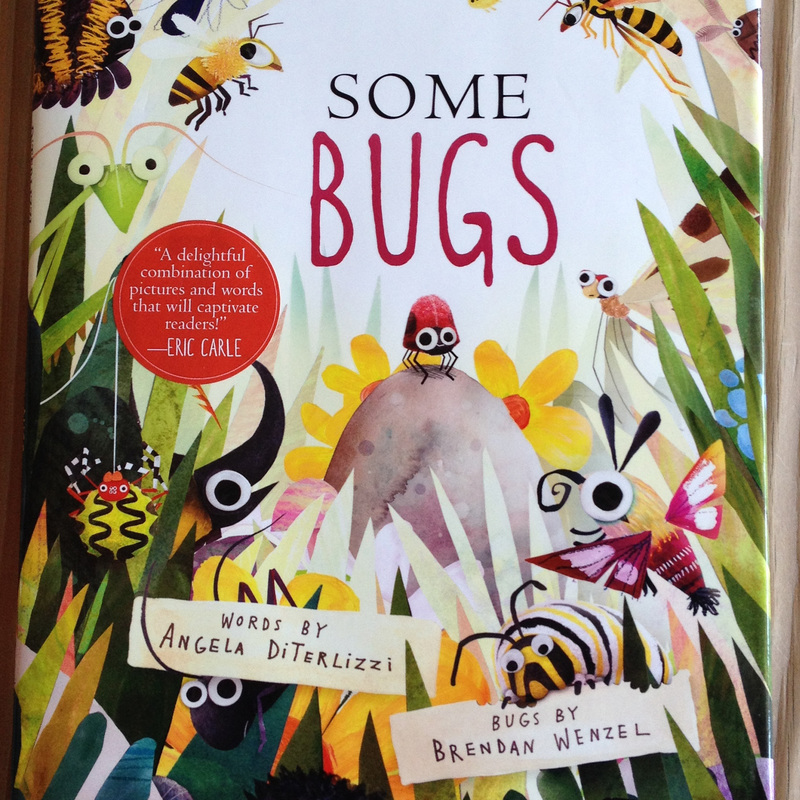



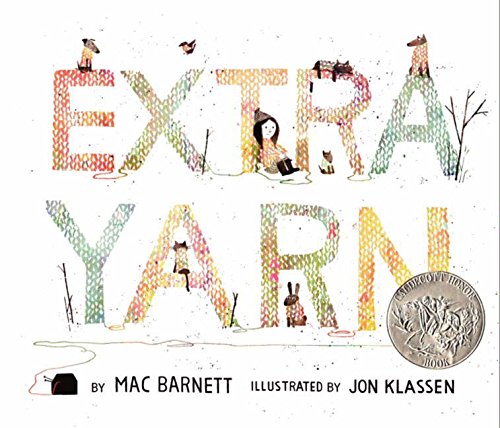
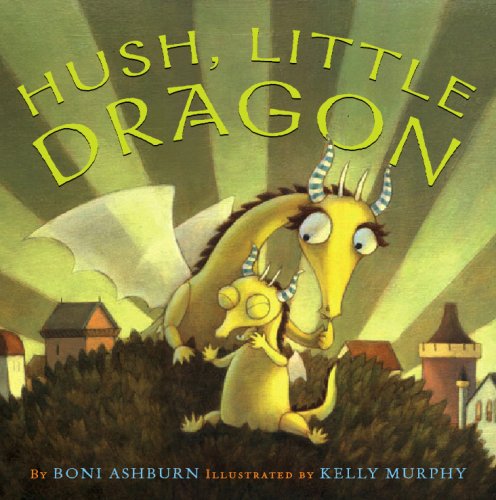






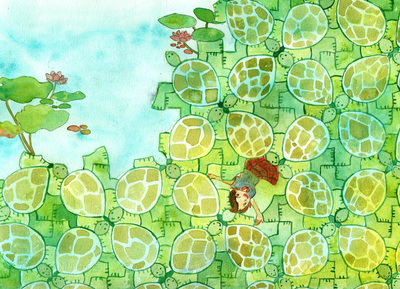




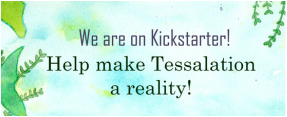
 RSS Feed
RSS Feed
